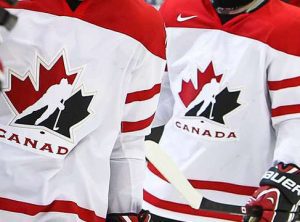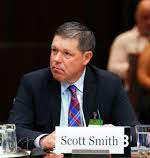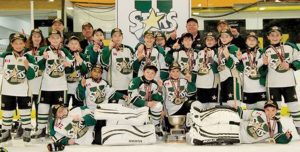
It displays our national colours – red and white. It depicts our official winter game – the game we invented and generally dominate at both the women’s and men’s elite level of play. It has always captured a sense of nation, sport and community. And even though I’ve never had the privilege of wearing it in any official capacity, I always feel an overwhelming sense of pride whenever I see it.
“It’s as familiar a sight to Canadian hockey fans as Marie-Philip Poulin coming through in the clutch and Jonathan Toews wearing a gold medal around his neck,” says the Hockey Canada website. “A skater seemingly breaking through the maple leaf while wearing the national symbol.”

However, just as the COVID-postponed World Junior Hockey Championship began in Edmonton this week, much of our hockey pride has been shattered by revelations at recent federal hearings. Questioned at a Parliamentary hearing last month, Hockey Canada CEO Scott Smith revealed that between 1989 and 2022, the organization had settled 21 cases of alleged sexual assault, paying out nearly $9 million in settlements.
Further, that Hockey Canada had used its National Equity Fund (comprised of membership fees paid by young players across the country and worth about $15 million) to “pay out settlements … without its insurance company or outside scrutiny.”
In May of this year, The Sports Network reported that Hockey Canada had quietly reached a settlement with a woman who had filed a lawsuit against the organization, alleging that she was assaulted by eight players, including members of the World Junior team, in London, Ont., in 2018.
The TSN story reported that Hockey Canada had dealt with one or two sexual assault allegations per year over the last six years, paying out nearly $9 million in 21 settlements since 1989.
On Saturday, Michael Brind’Amour, the chair of Hockey Canada’s board of governors stepped down. But anybody who cares about the survival of our national game – especially at the amateur level – must recognize the problem goes far deeper than executive decision-making.
Indeed, in a Toronto Star editorial this week Calvin White, author of The Secretive Life of Teenagers, described the problem as “hockey’s toxic culture.” As a trained high school counsellor, White says boys playing hockey in Canada “live in a dome of pressure,” that comes from parents living out their own dreams of grandeur through their sons, coaches demanding optimum performance 24/7, and spectators screaming at their every move.
“These boys are our sons,” White wrote. “So were those accused national-level players. The adult world grew them, just as we grow all of our boys, and then blames or condemns them when they reveal the training they did or did not receive.”
Amid all the negative media and crippling criticism directed at the organization and leadership of Hockey Canada, I still hold out hope that the amateur ranks of our national game will fix this.
Why? Well, only members of this community’s Uxbridge Oilies Oldtimers Hockey Club will remember this, but in the spring of 2015, our team helped a local youth hockey team cover some of its expenses. We were in the midst of a springtime oldtimers hockey tournament ourselves at that time, when several of the youth hockey team players asked if they could speak to our team.
“On behalf of the (Uxbridge) Major Atom Stars,” said one of the boys, obviously nervous, but genuinely thankful, “we would like to thank the Oilies for donating money to help our team compete in the OHF championship.”

Clearly the young player had listened to his dad (an Oilies player) recommend that the boys needed to acknowledge a benefactor publicly as part of the greater commitment to the game. His dad, as an encouraging parent, coach and example, had surely taught this boy how to take pain, be tough, go after what he wanted with dedication and commitment.
But so had he apparently dedicated time to teaching respect and relationships. He’d taught his son about balance, reflection and communication too.
“This (Hockey Canada scandal) tends to foster a distancing from ourselves,” concluded counsellor Calvin White. “We need to be pointing at ourselves, truly reflecting on what we do to our boys as they grow. The elephant in the room is us.”
The sooner those of us who play the game and teach our children to play it acknowledge that elephant, the sooner Hockey Canada – top to bottom – will emerge from its “unsportsmanlike” game misconduct.
And when youth hockey players truly apply life rules and values to the way they practise and experience our game – on and off the ice – then we can all wear that national logo with pride once again.